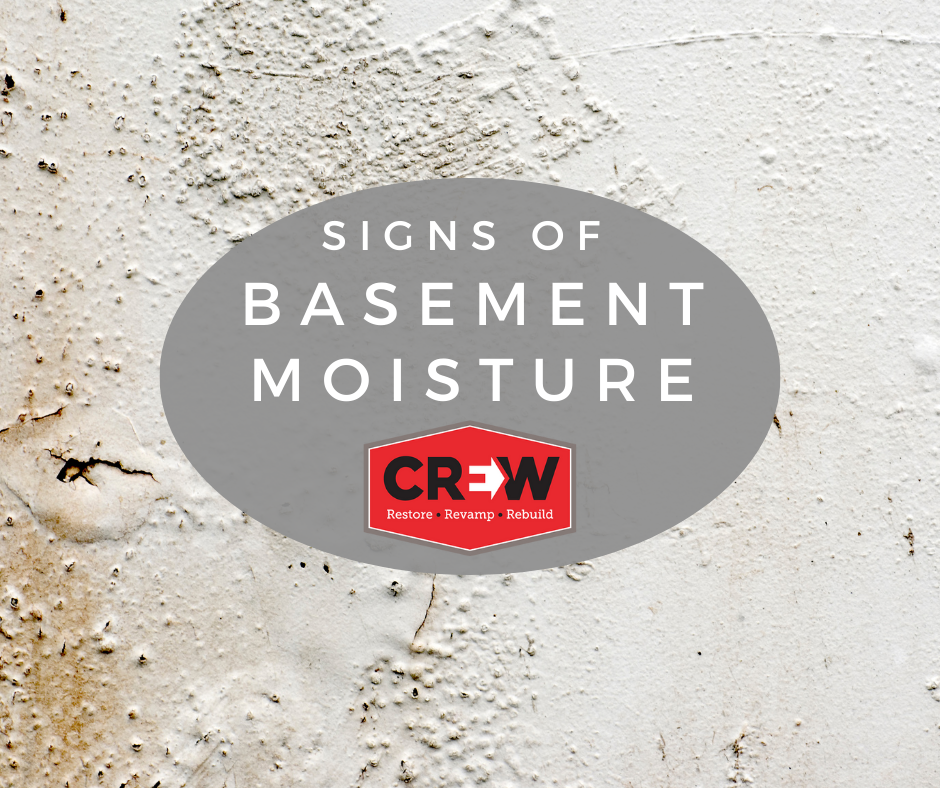Dealing with moisture in the basement is a major pain. Not only does it cause stress for home owners, it also becomes an area susceptible of mold and mildew, which can impact your health. Here are the most common causes of basement moisture, and ways to work around it.
Missing Drain Tile and Sump Pit
Older homes were not built with underground drainage systems, as they weren’t intended for living space. For homes that do have drainage systems, and still experience moisture issues more than likely are dealing with a broken connection, sump pump or clogged pipes. For older homes, the fix would be to dig up the flooring and add a drainage system, directing water to a pump and away from your home.
Gutters & Downspouts
Gutters and downspouts direct water away from your home, however, if they are broken, damaged, or full of debris, they can’t function properly. Water pools around your foundation, which will eventually get inside your basement. Every spring and fall, clean and inspect your gutters. If you notice signs of damage, fix those problems to avoid future moisture problems in your basement. Make sure your downspouts disperse water a minimum of 4 feet away from your foundation.
Poor Grading
Poor grading around your foundation is going to allow water to pool around your home. You want to have the ground slope downward away from your home. The dirt around your home should be compacted (to avoid future settling, leaving you with no downward slope). To fix this problem, you want to build up the dirt around your home, sloping downward away from foundation, 1 inch per foot- for 6 feet.
Condensation
Condensation in the basement is one of the easier fixes. Due to cool walls and warm air meeting, it causes condensation on your walls. If you have a basement bathroom, make sure you have, and use, the exhaust fan. Keep basement vents open to keep air circulating throughout. Run a dehumidifier. For basement laundry rooms, make sure the dryer vent is properly connected and not clogged.
Foundation Cracks
Foundation cracks are an open door for water to make its way into your basement. When floor joists aren’t properly connected to the walls, this will allow walls to move, and cracks to form. Water, itself can be the culprit to cracks, due to poor drainage in the soil. If structural problems are the issue, installing proper footing and connections will help seal the gaps. If the problem is just water pooling around the foundation, repairing the exterior drainage system should fix the water issue. Then you will need to repair the cracks.
Interior Leak
An interior leak can come from many sources- dishwasher, shower, toilet, sink, broken/disconnected pipe. Once you find the source, you will need turn off the water line, and fix the problem, set fans and dry out the area. When there is water damage to ceiling tiles, or sheetrock, some material will need to be discarded and replaced.
If you notice any of the following, that is an indication you have moisture in your basement:
Humidity in the air, condensation or water running down on walls, paint peeling on walls or walls showing stains, stains on flooring, rotting posts, musty mildew odor throughout basement, water pooling on floor, corner walls and flooring showing moisture.
When you are tired of dealing with moisture in your basement, give Crew Construction and Restoration a call. We will inspect your space, and provide you with a solution!



